Where Hornbills Fly: The Royal Belum International Hornbill Expedition
by Trinket Constantino
with Photos from Michael Lu, Wichyanan Limparungpatthanakij, Andrew Sebastian, Adri and Trinket Constantino
We were off to the “Hornbill Capital of the World”!
Royal Belum State Park in Perak, Malaysia is known to be the world’s oldest rainforest, estimated to be over 130 million years old, according to Andrew Sebastian, long-time friend of the WBCP and co-founder of the Ecotourism & Conservation Society Malaysia (ECOMY). Andrew was expedition leader to the 2017 Royal Belum International Hornbill Expedition (2017 RBIHE) which was held last August 25-28, 2017. It was exciting to be part of an international team out to survey and document possibly all 10 species of Malaysian hornbills which could all be found at the Royal Belum!
At the welcome dinner, we were happy to be reunited with familiar faces and to meet new ones. Team Philippines was represented by Adri and myself, Ixi and Mikeli Mapua and of course, fearless leader Mike Lu. There were representatives from Brunei, Singapore, Thailand, Japan, India, Taiwan, China, the United States and of course the local guys from Malaysia. Everyone was tired from their respective flights, but the welcome speech by Andrew more than excited everyone for what was to come the following days.

We started our journey to Perak early the next day, but the long-distance and the traffic (it was a long weekend holiday in Malaysia) had us arriving after lunch already! We were assigned to two huge houseboats which would be our moveable base for the weekend. From the Jeff Awam Jetty, it was a good two hour slow boat ride across Temengor Lake to the heart of Royal Belum.
The Royal Belum was a series of rivers and waterways dotted with forested islands. The original forest had been flooded after a dam had been built upstream. The eerie sight of dead tree trunks sticking out of shallow waters was a reminder of the past landscape. The park was way up to the north of Malaysia, where it shared a border with Thailand. Our houseboats chugged along slowly, allowing us to appreciate the misty forest around us and even spot our first few hornbills: Oriental Pied Hornbills and Black Hornbills.
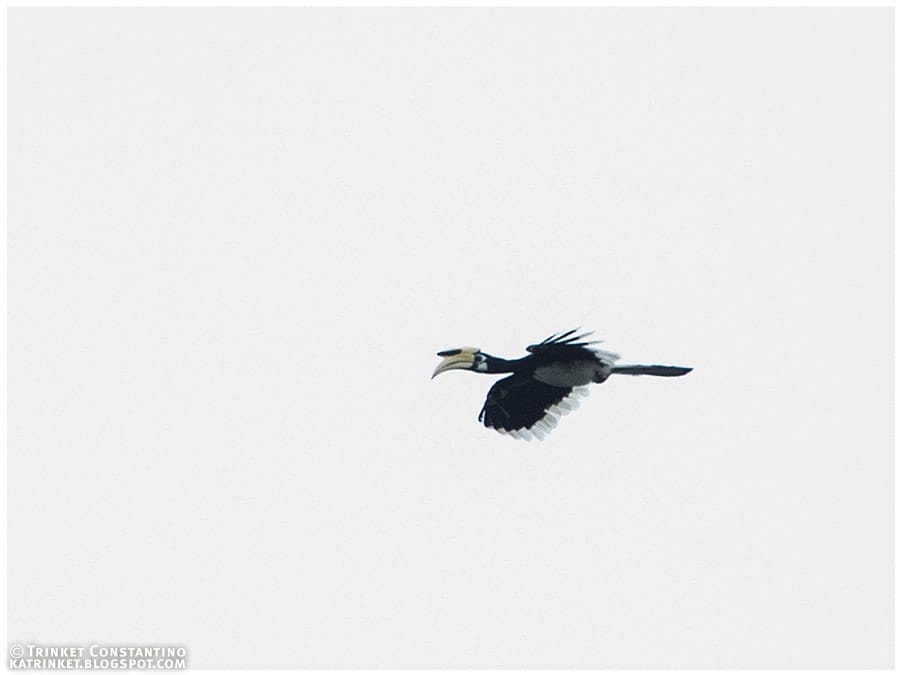
Rain fell hard halfway to the Kenarong base camp we would dock at (it turned out to ba a very rainy weekend). When the sun came out, several speedboats were also prepared: it was time for our first survey!

After a quick briefing by Andrew, teams were assigned a guide and a boatman and handed a laminated guide to the 10 hornbills of Malaysia. Team Philippines was lead by a familiar face: Jay (Wichyanan Limparungpatthanakij) of Thailand! All 3 Thai participants supplemented the Malaysian guides as they were the most familiar with the birds common to the region. We were all happy to have Jay on our team.

We all boarded the speedboats while the houseboats continued on their way to the base camp. Germaine’s Swiftlets were flying high, as if to warn us that there was more rain to come!

As our speedboat lept over the still waters, we were quick to spot more Oriental Pied and Black Hornbills. A pleasant surprise was a number of raptor species. That afternoon we saw several White-bellied Sea Eagles and Lesser Fish Eagles. Against the gloomy sky was silhouetted a perched hawk eagle, expertly identified by Jay as Wallace’s Hawk Eagle. What started out as a quick shower was quickly progressing into a heavier rain, and so the speedboats began to make their way back. Too bad because we had just encountered a huge tree with several Large Green Pigeons perched on its branches like Christmas ornaments!
Of course the rains let up again when we arrived at base camp. There we had a better view of the Large Green Pigeons perched on a huge strangler fig tree at camp. We watched the swiftlets glide gracefully across the sunset sky, joined by Grey-rumped Treeswifts and Silver-rumped Needletails. A couple of Fiery Minivets were also chasing each other above us, while the loud call of a Great Slaty Woodpecker boomed from an island across the water. It later flew to where we were, only to be spotted in the darkening forest by the most patient of us birders.
In the evening after dinner, there was a short program by Perak State Park Corporation. Souvenirs were handed out to all the participants who were now mingling with both old and new found friends. Sunday would be a full day for us, with two boat surveys, one in the morning and one in the afternoon.
Early the next morning (it was actually 7:00 am but still a bit dark out), it was a quick breakfast and a quiet flurry as everyone got assigned to their speedboats. It was looking to be an exciting morning!
The forest around us had an ethereal look. The morning mist was rising from the trees and the silence of dawn seemed to muffle the sounds of the speedboats. Barely had we started when we spotted in the distance a flock of hornbills flying in the mist: Plain-pouched Hornbills!
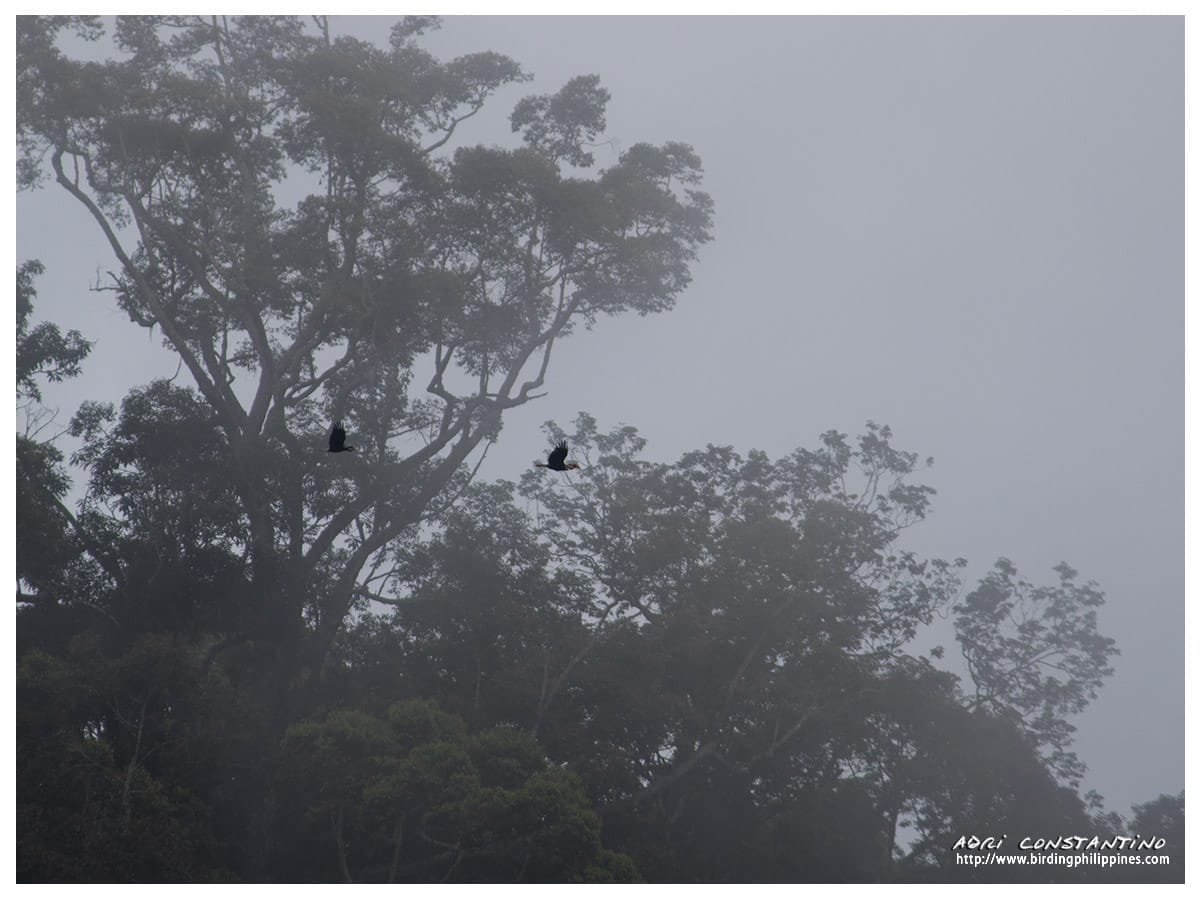
The Plain-pouched Hornbills were one of the main targets in the expedition. Classified as vulnerable under the IUCN, they range from Myanmar, Thailand and Peninsular Malaysia with Royal Belum as one of best places to spot them. The timing of the expedition coincides with the known migratory movements of this hornbill, and the high counts of Plain-pouched at Royal Belum during this time of the year contributes to Royal Belum’s declaration as IBA.
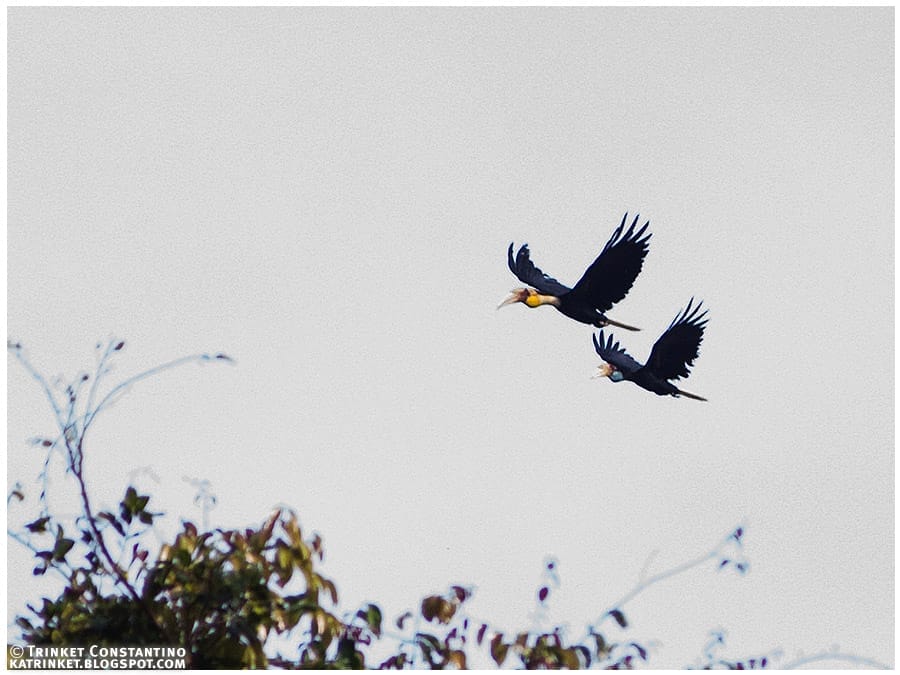

After the first flock of Plain-pouched hornbills, everyone in our group, including our very game boatman Aziz, began pointing out flocks. It is hard to imagine that these birds are difficult to spot elsewhere. Jay was as professional as one can get for leader: he would quickly identify how many males and females there were and indicate the direction of flight for our survey records. With Aziz’s help, we also noted down our location.
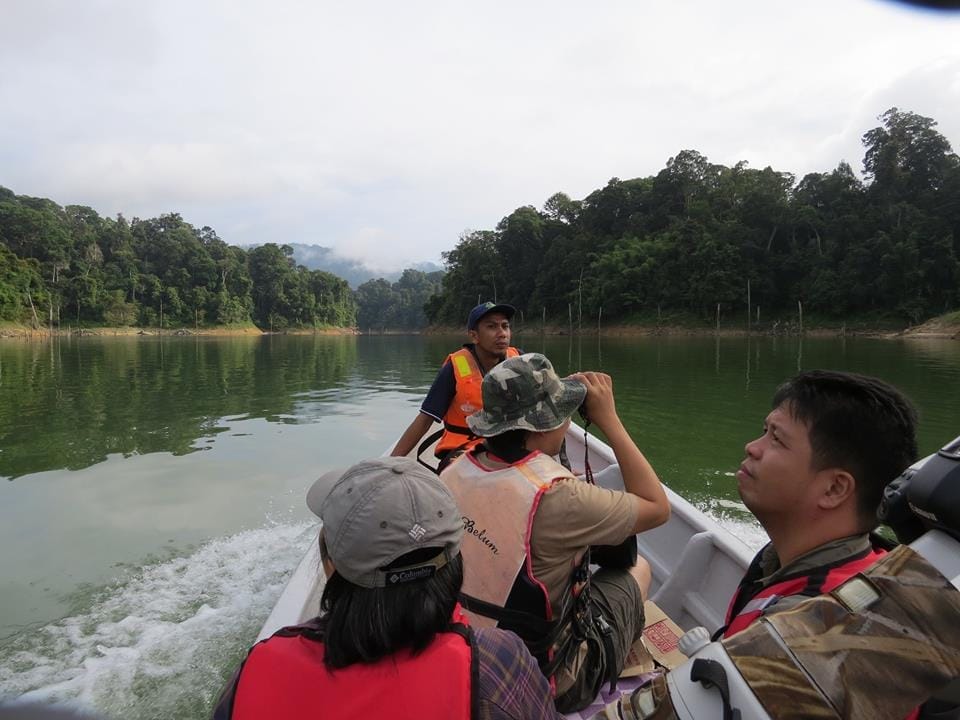
We ooh-ed and aaah-ed (and counted!) as every Plain-pouched hornbill flock passed, whether nearby or in the distance. We even had a small group perched on some trees!
And of course, we spotted more of the Pied Oriental and Black Hornbills we had been seeing the day before.
We had many other exciting finds as well: a trio of White-bellied Sea Eagles in a dog fight over territory surely caught our attention. More Large-green Pigeons, plus some Mountain Imperial Pigeons and belatedly identified Little Green Pigeons were perched on bare branches. A tiny Black-thighed Falconet looked diminutive beside the hornbills.

Soon, the sun rose higher and higher. Aziz pulled up to a sloping muddy bank for a toilet break. Wow, birding from a speedboat half the morning can give one quite a kink in the neck (not to mention sore backsides!).
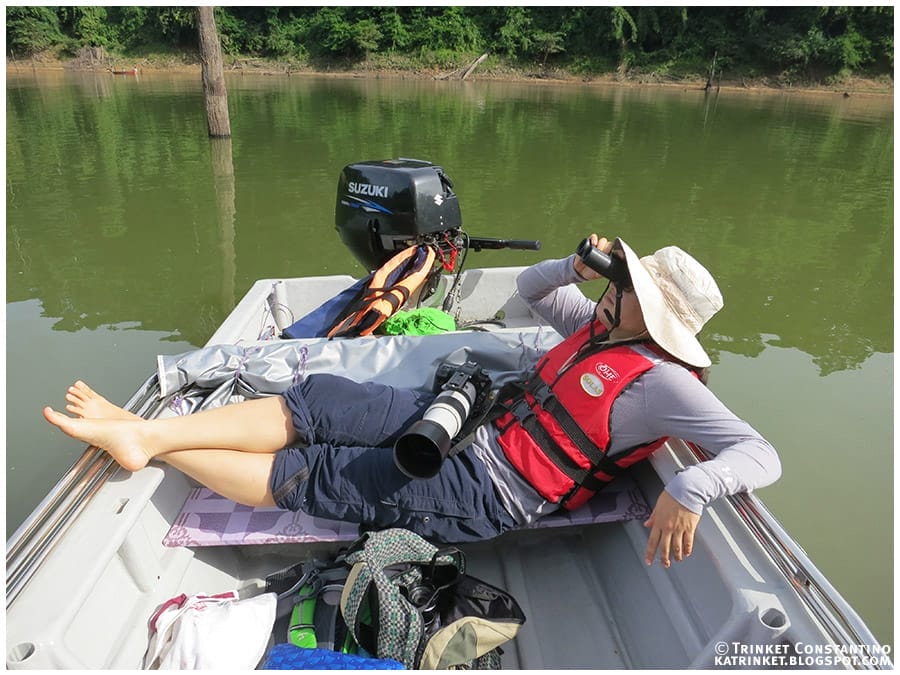
Elephant tracks and poop studded the muddy bank! The elephant tracks were just circular depressions, like someone had poked the mud with an upright pole! There was dried up poop, all grassy and falling apart, and also fresh poop, just a few days old. While we didn’t spot any elephants on the trip, it was as close as we got to a wild elephant encounter.
The other speed boats converged also just as we were leaving the spot. Our team decided to just go on with the survey, missing a chance for a group photo. But it turned out that it was more than a fair exchange for one of the highlights of our entire trip!
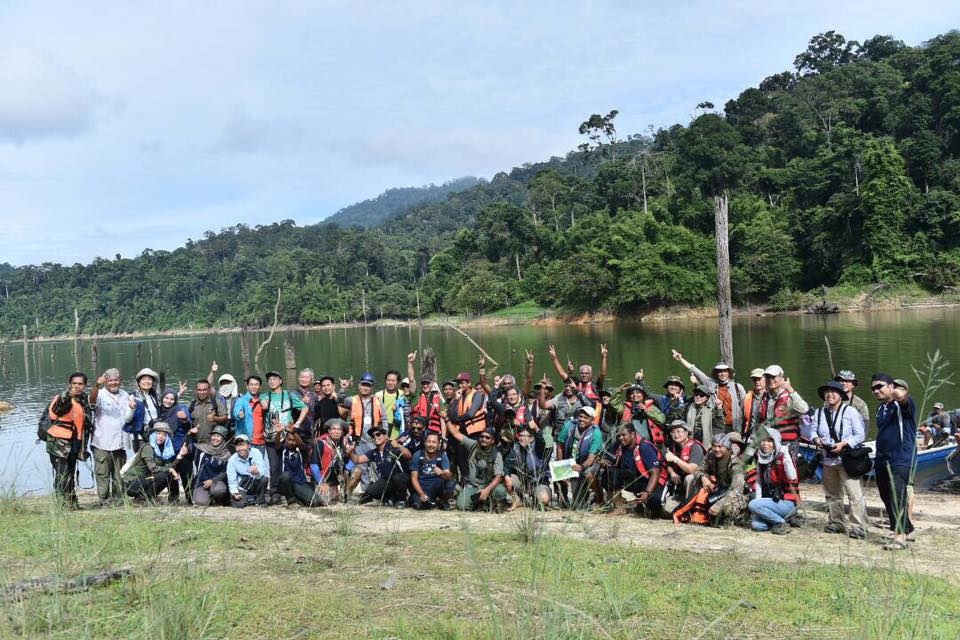
On our way back, we saw several raptor species. We jokingly said that Royal Belum could be Raptor Capital as well! Sightings of Lesser Fish Eagles, Crested Honeybuzzards, Rufous-bellied Eagle, Crested Serpent Eagle and even a distant Bat Hawk more than satisfied the raptor watcher in each of us.
In fact, the highlight I had mentioned occurred while we were stalking a Changeable Hawk Eagle perched near the banks.

We were all concentrating on taking a photo of the regal bird when Aziz and Jay suddenly spotted a hornbill flying from behind the trees. It was a lone Helmeted Hornbill! We had spectacular views of its bizzare head and casque and of its long tail.
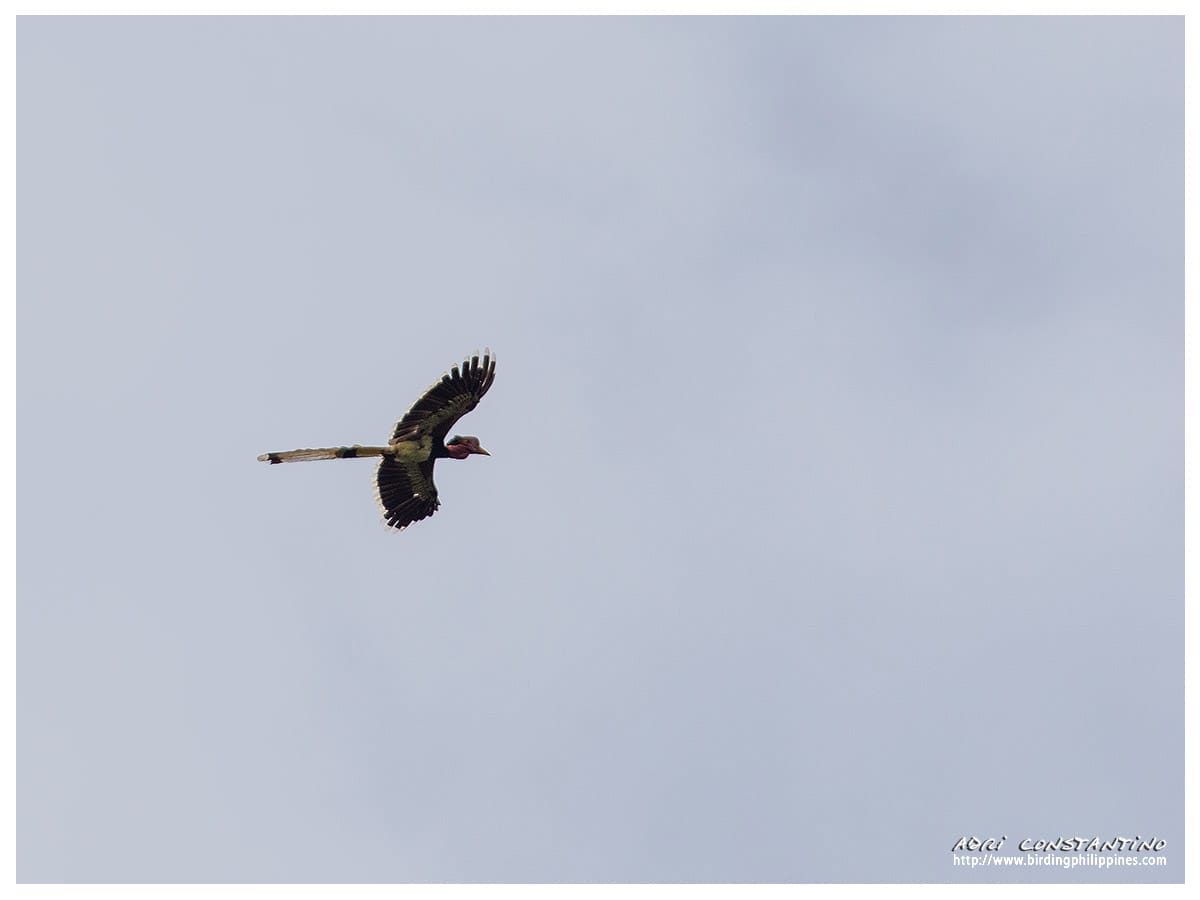
The Helmeted Hornbill is critically endangered due to hunting. The very reason for its name and almost prehistoric appearance – its ivory-like casque, is the reason for its decline in the wild. It was also the logo for the 2017 Royal Belum International Hornbill Expedition.

So it turns out that we were the only group to spot this species during the expedition, and modesty aside, we were very happy (and a bit smug) about our sighting!
During the lunch break, everyone went their own way. Some took a rest from the humid heat. Some reviewed the photos from the morning. Some sat down to good conversation. Some continued to bird around the camp area. Some photographers looked for subjects. There was a Forest Wagtail hanging around and there were also some Stripe-throated Bulbuls to add to the list.
Mike and Adri and I explored around the base camp, but I refused to go into the trail after spotting a nice juicy leech at the trail entry! When Victor Yu (of Taiwan) came out with Choy Wai Mun (of Malaysia) came out of the same trail later, Victor shook off more than 10 leeches attached to various body parts. In our shorts and sandals (speedboat attire), I was happy to have stayed out in the gazeebo just talking with the other participants!
In a tree in the distance (we joked that it could’ve been in Thailand), eagle-eyed Andrew spotted a pair of Siamang playing in the trees. The Siamang is the largest gibbon to be found in the area.
In the afternoon, we all set off again. Ixi had passed on the afternoon survey because she was not feeling well, a decision she would also not regret later.

As usual our most “common” sighting would be flocks of Plain-pouched Hornbills. Halfway through the survey, as we were watching a Western Osprey fish over the waters, the skies darkened and angry looking clouds began rolling in.
Mike asked that we raise the speedboat roof just in case. It began to drizzle and we decided to head back. But wait, there was a flock of Oriental Pied Hornbills playing nearby! Despite the darkening skies we spent a few minutes watching the hornbills… and then it began to pour.
And it was REALLY POURING. The visibility was pretty bad, it’s amazing Aziz found his way to another camp nearby where we could take shelter (even if we were already soaking wet to the bone, especially poor Jay who was up front and center of the speedboat!). It turned out that most everyone had gathered at the same camp to escape the sudden squall. We all laughed as we wrung out our wet clothes and checked our equipment. And as gently as it began, the rain eased up and stopped completely. We all headed back to our boats and sped through the waterways, enthralled by the beauty around us. The golden rays of the afternoon sun seemed to make the water droplets on the trees sparkle, and an enchanting mist shrouded the low forests.
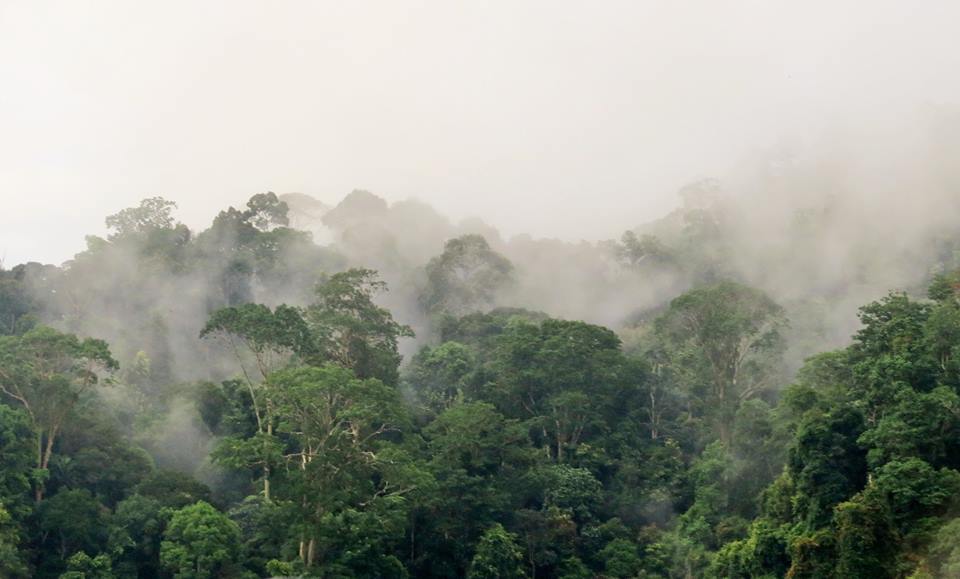
When we got back, it was a quick rush by everyone to get to the showers! After dinner, there was a short closing ceremony and sharing about our amazing Royal Belum experience. Guides, photographers, birders all gave their input. While our group saw 4 hornbill species, the some of the other groups had also seen Rhinoceros Horbill and Wreathed Hornbill, for a total of 6 hornbills species spotted. And then it was time for bed for everyone after a full and exciting day in the Hornbill Capital of the World.
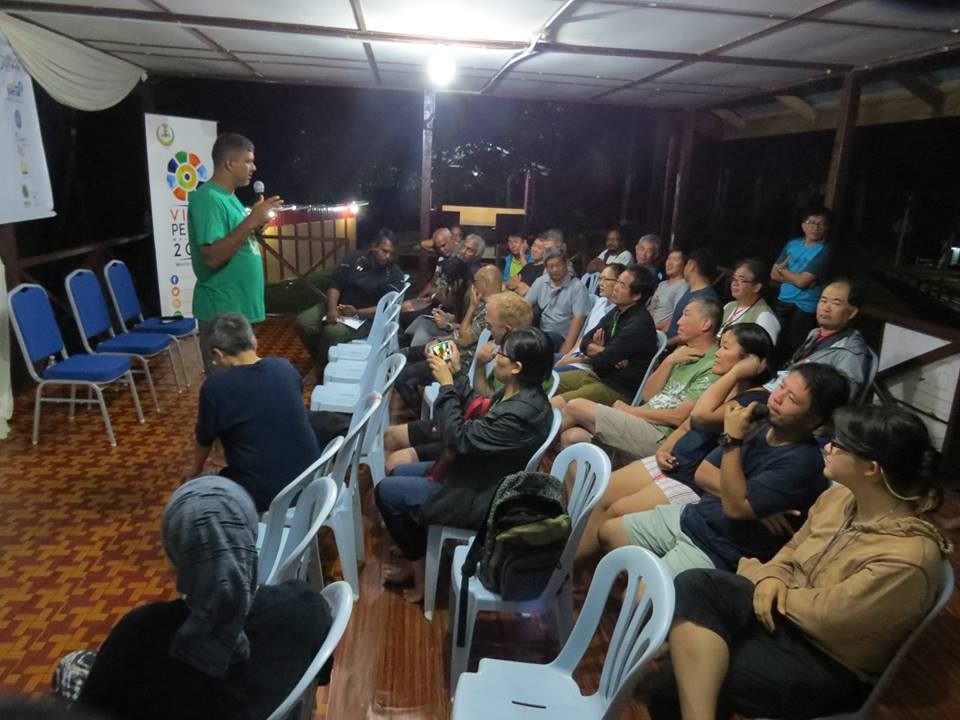
The next day, those of us not joining the post expedition tour to Fraser’s Hill were sent on our way back to the jetty on speedboats (a much shorter half hour’s ride back). Adri and I were assigned to a speedboat with the Thai and Singapore Teams while Mike was on a separate speedboat. On our way back, we passed a Peregrine Falcon perched on a dead tree trunk in the water. Not being able to resist, we asked if it was possible to turn back the boat for better views. It turns out that the Peregrine Falcon was feasting on what looked to be a Large Green Pigeon (as identified by Jay)! Out came the packed cameras (at least the ones with shorter lenses) followed by a bit of jostling to get good views!
But that wasn’t the end of it. A Grey-headed Fish Eagle way up close also merited the same request to turn back.

It seemed that no one wanted to end our expedition, not us and not the birds of Royal Belum. It was an experience to build memories, not only of great birds and birding, but of the friendships made and strengthened. It was a great farewell to the paradise of the Royal Belum State Park.
—-
The Royal Belum International Hornbill Expedition was co-organised by Malaysia’s leading ecotourism NGO, ECOMY and the Perak State Park Corporation. The event was supported by the Northern Corridor Implementation Agency (NCIA), Tourism Malaysia and Ministry of Tourism & Culture Malaysia. An especially warm thanks to Expedition Leader extraordinaire Andrew Sebastian.


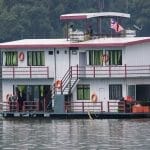
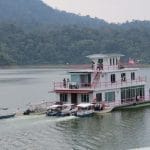
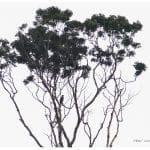
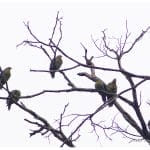
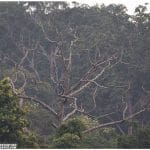

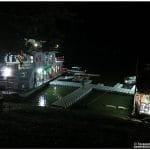




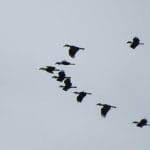


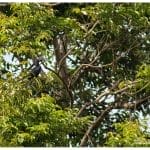
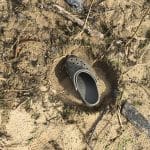
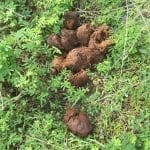

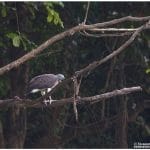

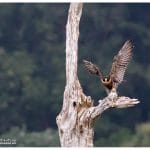
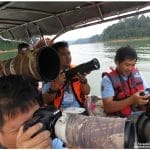
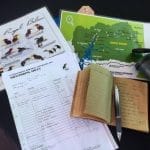

You have clicked some amazing pictures.
Lovely to see your article